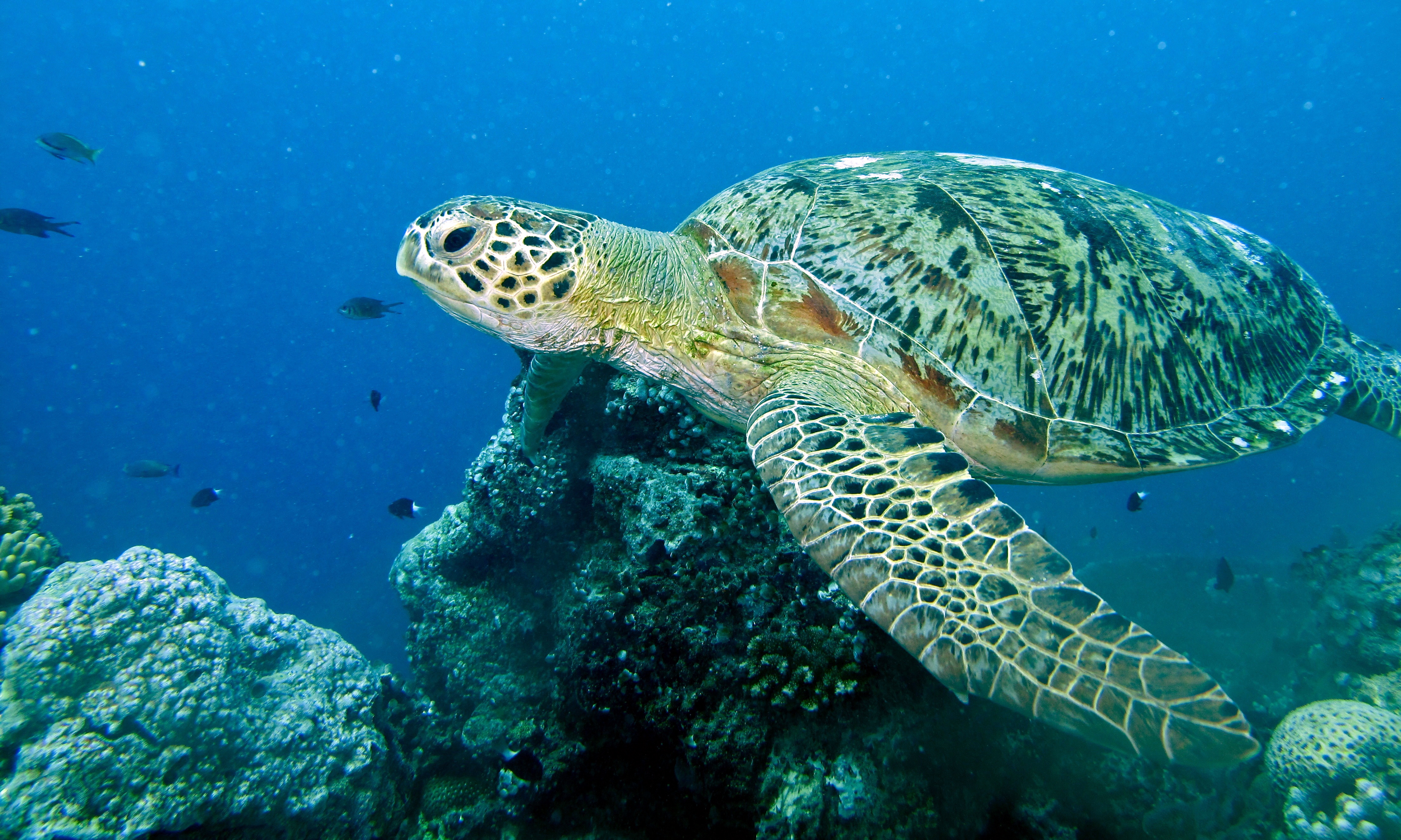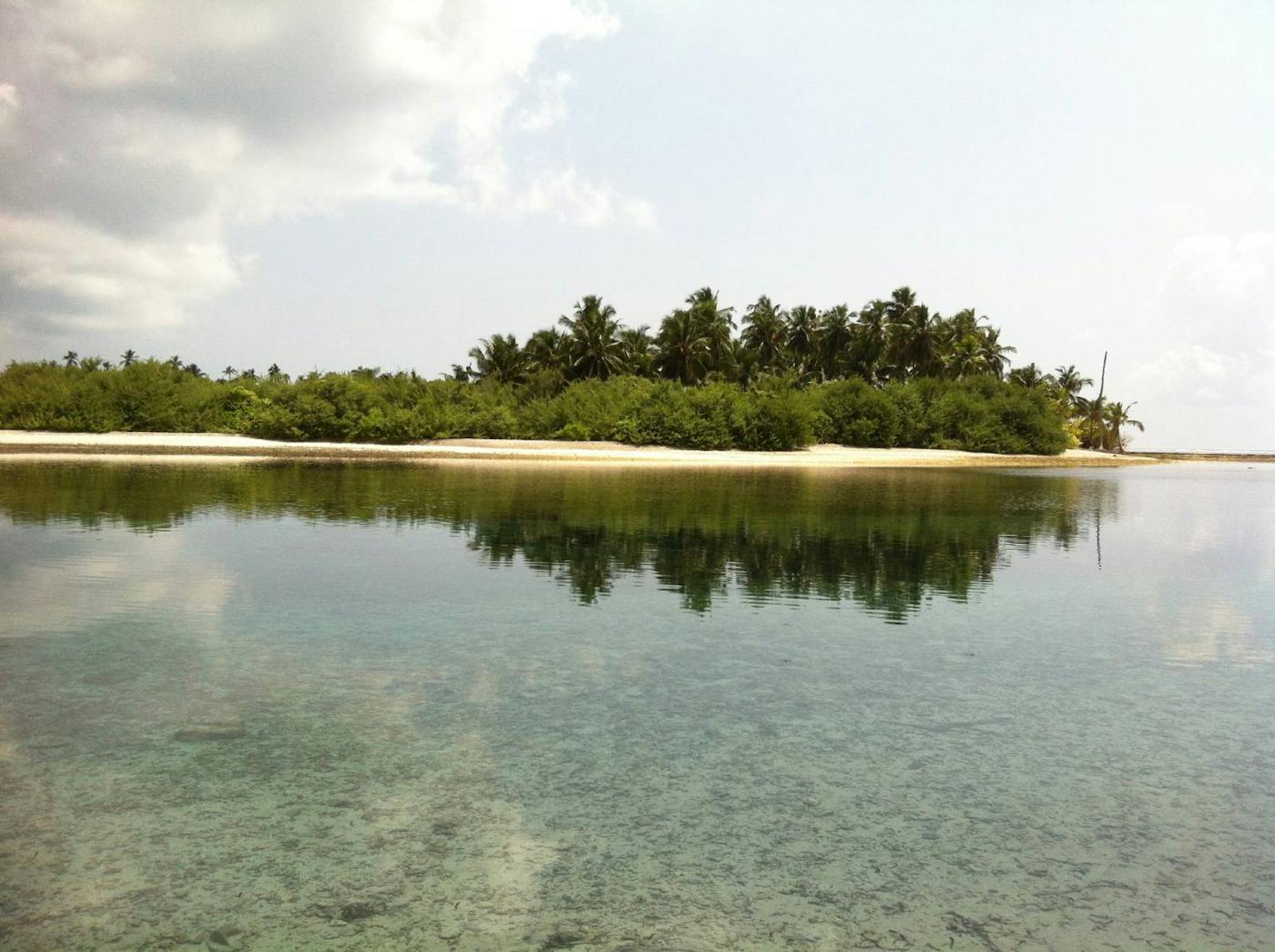Maldives-Lakshadweep-Chagos Archipelago Tropical Moist Forests
The ecoregion’s land area is provided in units of 1,000 hectares. The protection goal is the Global Safety Net (GSN1) area for the given ecoregion. The protection level indicates the percentage of the GSN goal that is currently protected on a scale of 0-10.
Bioregion: Central Indian Ocean Islands (IM1)
Realm: Indomalaya
Ecoregion Size (1000 ha):
55
Ecoregion ID:
243
Conservation Target:
33%
Protection Level:
4
States: Philippines, British Indian Ocean Territory, India, Maldives
Imagine a hermit crab weighing 4 kg and measuring over 1 m across the spread of the 10 legs. This nightmarish creature is the coconut crab, a terrestrial hermit crab that is the largest living arthropod, the taxonomic phylum that includes all invertebrate animals from insects and millipedes to spiders, crabs, and shrimp.
This is also the largest land animal on these islands, even larger than the terrestrial mammals found there. The primary food of coconut crabs is fruits, seeds, and other plant matter, but they will eat carrion and other animal matter, and thus play an important ecological role in recycling biomass on land.
The Maldives-Lakshadweep-Chagos Archipelago ecoregion represents three island groups along a submarine mountain range known as the Chagos-Laccadive Plateau in the western Indian Ocean. Together, this archipelago represents the most extensive coral reef and atoll community in the Indian Ocean, and the largest atoll system in the world.
The Lakshadweep is the closest to the mainland, and comprises of 36 small islands scattered across 78,000 km2 in the sea but making up a mere 32 km2 of land area. The Maldives is collectively larger, with 1,190 islands totaling 298 km2 in land mass, while the Chagos has 50 islands with a total area of 60 km2.

The flagship species of the Maldives-Lakshadweep-Chagos Archipelago Tropical Moist Forests ecoregion is the green turtle. Image credit: Creative Commons
The climate is monsoon tropical. A southwest monsoon from April to October brings about 1,600 mm of annual rainfall in the northern, drier Lakshadweep Islands, gradually increasing to over 3,800 mm in the southern Maldives. Temperatures vary little, ranging between 24°C and 30°C, with high humidity, although the constant ocean breezes make it comfortable.
The natural vegetation of these islands is tropical forest and shrub. The latter consists of hardy salt- and drought-resistant bushes and sedges in the family Cyperaceae. Beach cabbage, Scaevola sericea, a common bush growing to about 4 m in height, and the smaller Pemphis acidula line the beaches.
Further in, and depending on the size of the islands, there could be a community of less salt tolerant trees such as Cordia subcordata, Hibiscus tiliaceus, and Premna obtusifolia, with occasional taller Hernandia nymphaeiflia and Terminalia catappa trees. Coconut palms, breadfruit trees, and drumstick trees have been introduced and have now become naturalized.[i] Mangrove forests with species of Bruguiera line the coastal areas.
These islands support important seabird rookeries and turtle nesting areas. Birds of special concern include the Maldivian pond heron, white tern, lesser frigate, brown-winged tern, large-crested tern, black-naped tern, and red-footed booby. The green turtle, olive ridley sea turtle, leatherback turtle, loggerhead turtle, and hawksbill turtle nest on these beaches. The indigenous mammal community is depauperate. In the Maldives, the mammals are restricted to two species of fruit bats, the Indian flying fox and the variable flying fox. Several species of rats, mice and other exotic mammals have been introduced to these islands.
The primary threat to these low-lying islands is climate change and consequent sea level rise, storms, and accompanying wave surges. Tourism and solid waste is degrading the marine and terrestrial environments. Native vegetation is cleared for tourism infrastructure and replaced with exotic crop and fruit trees, including banana, mango, citrus, and Sapote and other plants such as yams, taro, millet, watermelon, and pineapples. Local fishermen collect eggs from rookeries. Factories and ship traffic dump solid waste and oil that wash up on beaches and reefs.
Thus, the priority recommended conservation interventions are to: 1) protect the rookeries and turtle nesting beaches from poaching of eggs; 2) protect the coastal vegetation, which acts as a buffer against wave surges and tidal action; and 3) implement solid waste disposal systems to protect the fringing coral reefs and marine ecosystems.
Citations
1. MEE. 2015. National Biodiversity Strategy and Action Plan 2016-2025, Maldives: Ministry of Environment and Energy. Pp 115
2. Carr, P., Hillman, J.C., Seaward, M.R., Vogt, S. and Sheppard, C.R., 2013. Coral Islands of the British Indian Ocean Territory (Chagos Archipelago). In Coral Reefs of the United Kingdom Overseas Territories (pp. 271-282). Springer Netherlands.
3. Rao, T.A. and J.L. Ellis. 1995. Flora of Lakshadweep Islands off the Malabar coast, peninsular India, with emphasis on phytogeographical distribution of plants. Journal of Economic and Taxonomic Botany 19:235-250.




